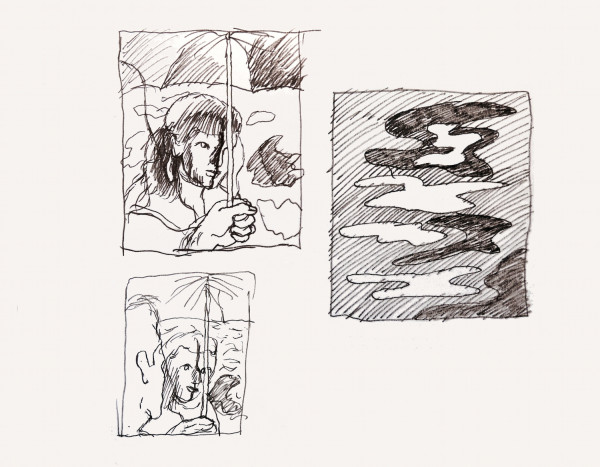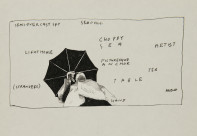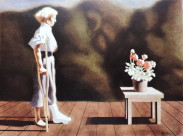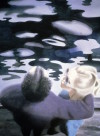A man, seen from behind, holds an umbrella over a woman’s head. The background is an abstract pattern of biomorphic watery shapes. Robert makes a separate study for this background, a composition of floating black and white forms, which turn a rainy day into an amorphous dream world.
Leonardo da Vinci encouraged young artists to stare at the stains on weathered walls as a stimulus to their imaginations. The surrealists adopted this advice into a working method of automatic drawing. According to the surrealists, this method freed the mind from habits of conscious image making, instead allowing unconscious impulses to emerge.
Robert often spoke of the psychological effects of his pictures. Not everyone sees a picture the same way; even one person can interpret an image in many different ways. There is something puzzling about this image of a shared umbrella. Are there romantic overtones here? If it’s raining, why does the umbrella cast such a hard shadow, a shadow that divides the woman’s face in half? Is the idea here that love can be sunny, love can be overcast, and a woman’s feelings toward a man can change?





